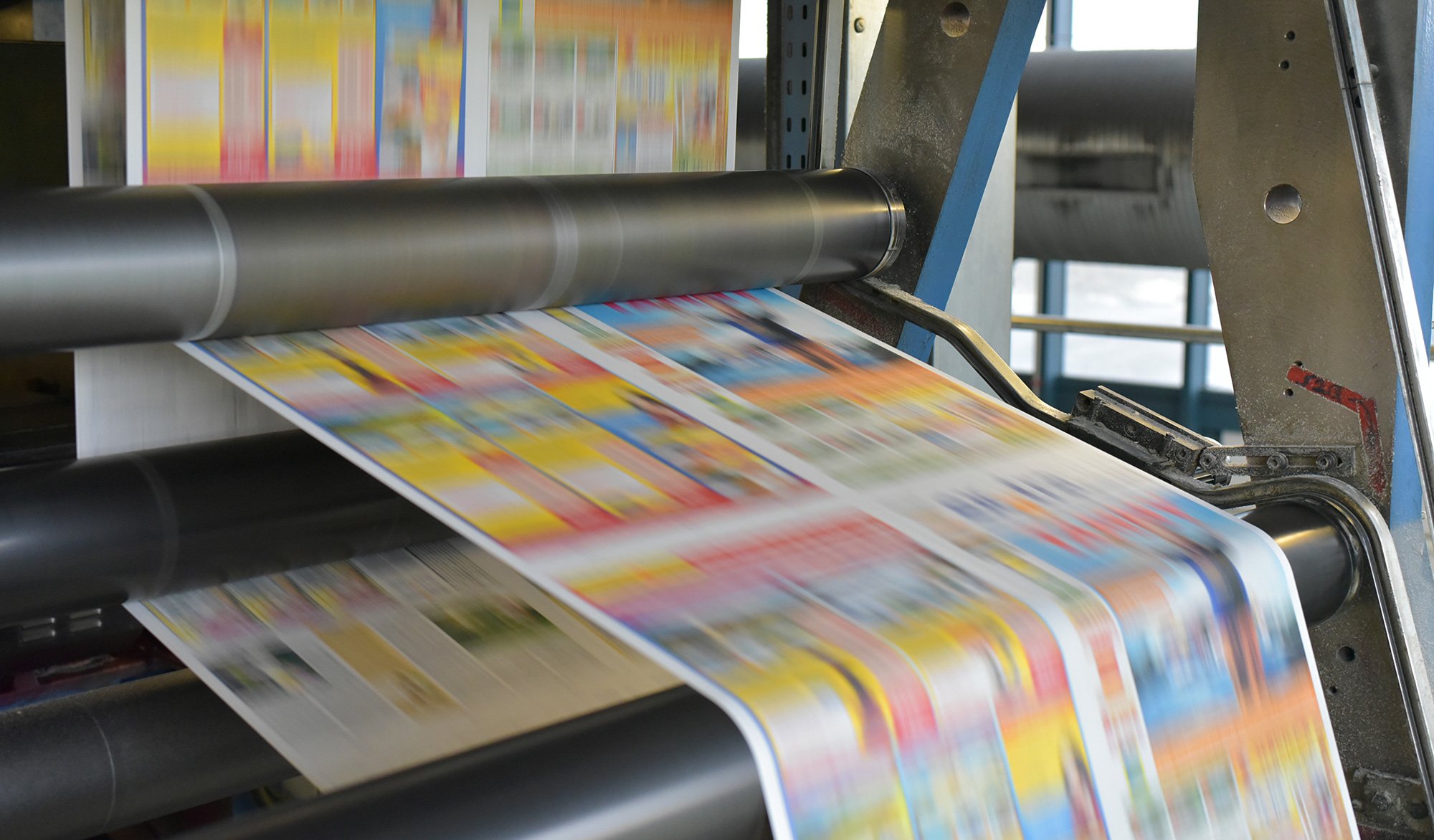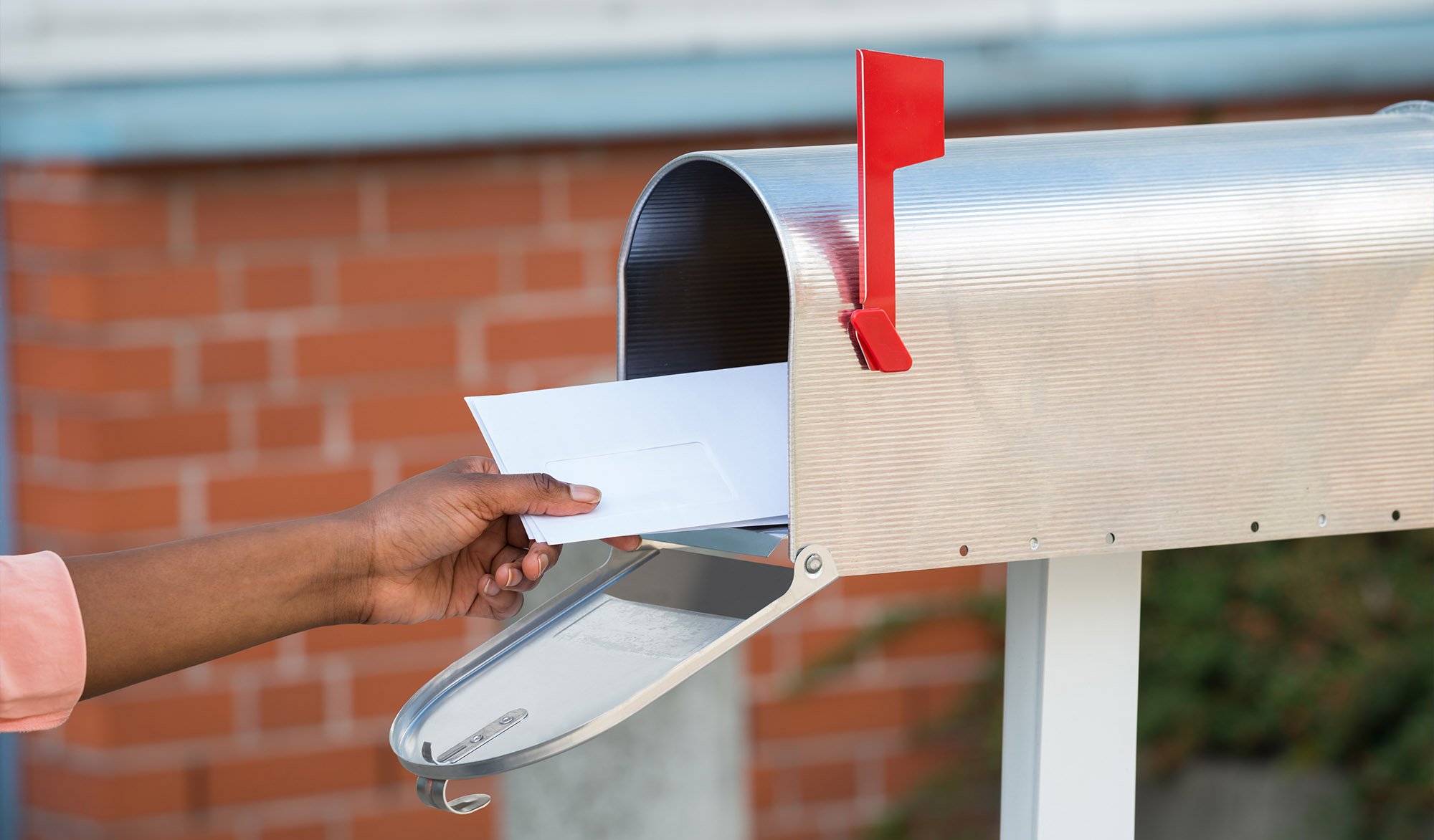If you’ve ever witnessed newspaper print running in a continuous stream through large cylinders on a printing press, then you’ve most likely seen web printing in action. Web printing, a technology that once revolutionized the publishing industry, is a form of offset printing ideal for mass production. Used for high-volume and fast-paced print jobs, it uses large rolls of paper that are fed through a printing press for a continuous run.
This type of printing lends itself to formats typically associated with mid to high volumes—usually beginning at 50,000 pieces or more. Many web formats include:
- Direct Mail
- Newspapers
- Magazines
- Catalogs
- Brochures
- Order Cards
- Postcards
- Books
- Calendars
After printing is complete, many web presses have the ability to add finishing touches, such as cutting, folding, perforating, and die cutting in line so products roll off the press ready for distribution.
Let’s explore the different types of web printing, how it compares to sheet-fed, and its advantages and disadvantages to find out which is the right option for your next order.
Heatset vs. UV Web Printing
Print shops use two different ink drying techniques in conjunction with web printing: heatset and UV.
Heatset, which can be completed on both coated and uncoated paper, involves inked paper running through a dryer positioned at the end of the printing press. Once inside, heaters use evaporation and absorption to dry the paperThis process leaves the paper too hot for folding or cutting, so a set of chill rolls usually accompanies a dryer.
With ultraviolet (UV), ink dries faster, as the result of a chemical reaction in the ink to the UV lamp. UV web printing doesn’t give off as much heat of heatset printing, Unlike Heatset, most UV equipment used in producing direct mail formats dries in between each printing unit. That allows for turning the web over to print the other side at various stages. The importance of which is that an 8 color press is not limited to printing 4 colors on 2 sides. It can print 5 colors on one side, and then 3 on the other. For branding purposes, this is important as it allows better
integrity of a PMS color without interfering with the 4 color process printing. Also the UV process, allows instant drying as opposed to heatset where time is needed to allow evaporation of the ink. This allows forms to be printed, and immediately processed in imaging or bindery equipment.
Design Distributors is a UV web print shop, meaning faster dry times and quicker process throughput. This translates into cost savings for YOU, as well as time savings.
Advantages & Disadvantages of Web Printing
Web printing boasts many benefits for large-scale runs, but may not be the right choice for a smaller order.
With today’s technology, litho web presses often run at the same production speed as continuous ink jet digital equipment. Roughly 400 to 500 feet per minute—which translates to about 50,000 8.5 X 11 sheets per hour. A web press is also best used for mid to high orders of more than 50,000 pieces. It utilizes rolls of paper, instead of sheets, which is also less expensive to purchase providing an additional cost savings.
Since some web presses also handle a variety of finishing processes, this can save the cost of off line finishing. A web press can also produce two-sided printing in a single pass, further reducing cost..
In the instance your print run is less than 50,000 pieces or requires a thick, specialty paper or cardstock, web printing may not be the best option. You’ll need to choose another method, such as a sheet-fed press, to run that component.
Web Printing vs. Sheet-Fed Printing
Both web and sheet-fed processes offer high-quality printing and incredible color reproduction, but there are instances when sheet-fed printing should be used instead of web. Sheet-fed, which prints on individual sheets of paper, is perfect for heavier specialty papers and cardstock, smaller orders, and boasts options of inline coatings and varnishes. But, sheet-fed can only print one side and color at a time, isn’t optimal for thinner stocks, and is slower than web. So, in the areas where web or sheet-fed lack, the other can compensate.
Read our detailed blog on the differences and similarities between web printing and sheet-fed presses here.
Your Web Printing Options
Design Distributors boasts four web presses to complete your next high-volume order demanding quick turnaround. These include:
HP PageWide Web Press T240 HD
The HP PageWide Web Press T240 HB has revolutionized the Design Distributors experience, running 250 to 500 feet per minute and printing 32 to 58 million images per month. Plus, the HP Pagewide Press enables customers to personalize each direct mail piece as it runs through the cylinders. This can improve ROI, as variable data can increase sales by 10 percent. Another study found 98 percent of marketers believe personalization advances customer relationships, with 88 percent stating it delivered better customer experiences, 59 percent expressing it increased loyalty, and 50 percent reporting it increased ROI.
Muller Martini 10-Color Variable Press
With the ability to print 10 colors, the Muller Martini 10-Color Variable Press provides the “wow” factor to win customers over instantly. A study found people make up their mind within 90 seconds of their initial interaction with a product, and about 62 percent to 90 percent of decisions are based on color assessment alone. This press also has special features, including in-line die cutting, remoist pattern gluing, and scratch and sniff and applied scents, which have been proven to enhance product information recall for about two weeks. Plus, the machine can deliver on a roll for lasering, or sheets to fold and cut, and can be completed with uncoated stock or a matte/silk coated finish.
Muller Martini 8-Color Variable Press
With similar capabilities of the 10-color model, this press has the ability to print multiple tones and hues, so you can take advantage of using the psychology of colors. Of the main eight, blue shows loyalty and trust, red stands for passion, purple symbolizes luxury, orange exudes affordability and hard work, yellow communicates optimism, pink represents feminism and youthfulness, and gray conveys professionalism, and each can be adjusted to elicit various feelings from different customers.
Didde Glaser
This press is useful for simple runs, as it uses four colors and operates only roll to sheet. It also boasts in-line remoist, pattern gluing, and two plow folding stations.
Each of these web presses can help you make the most of your next high-volume, high-speed campaign. Get a free quote today.
The ideal solution for high-volume orders, web presses offer a variety of special features to produce a finished product straight off the machine. This type of press can save you time and money when printing a thousand-piece order, but also provide the quality and personalization required to impact and influence customers.










